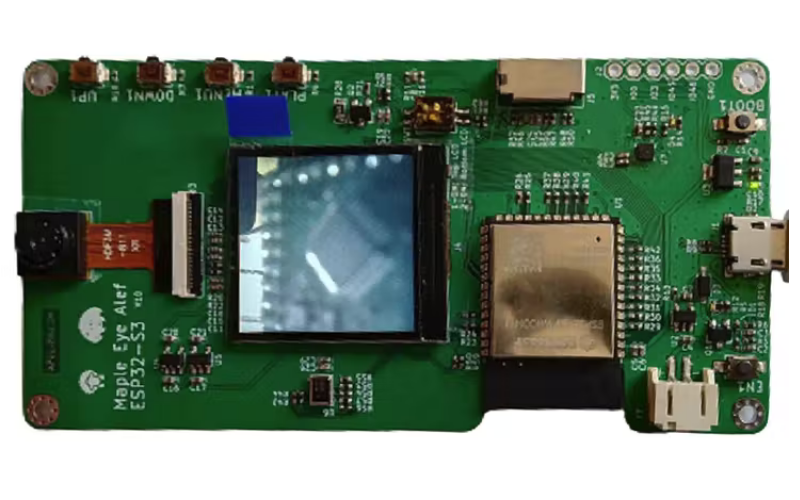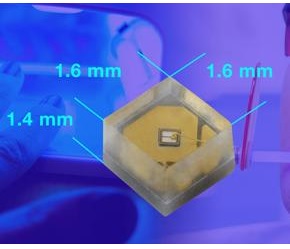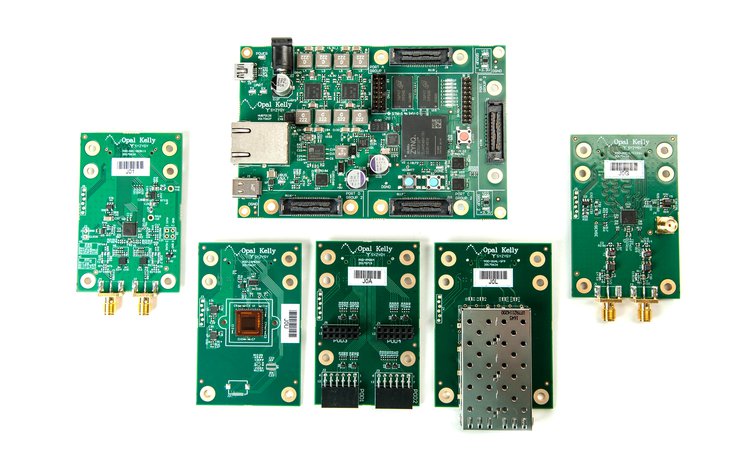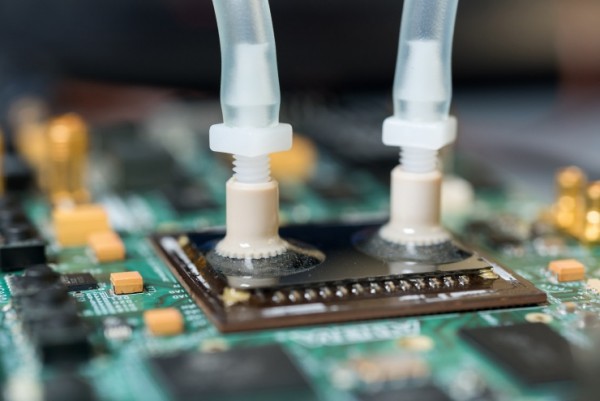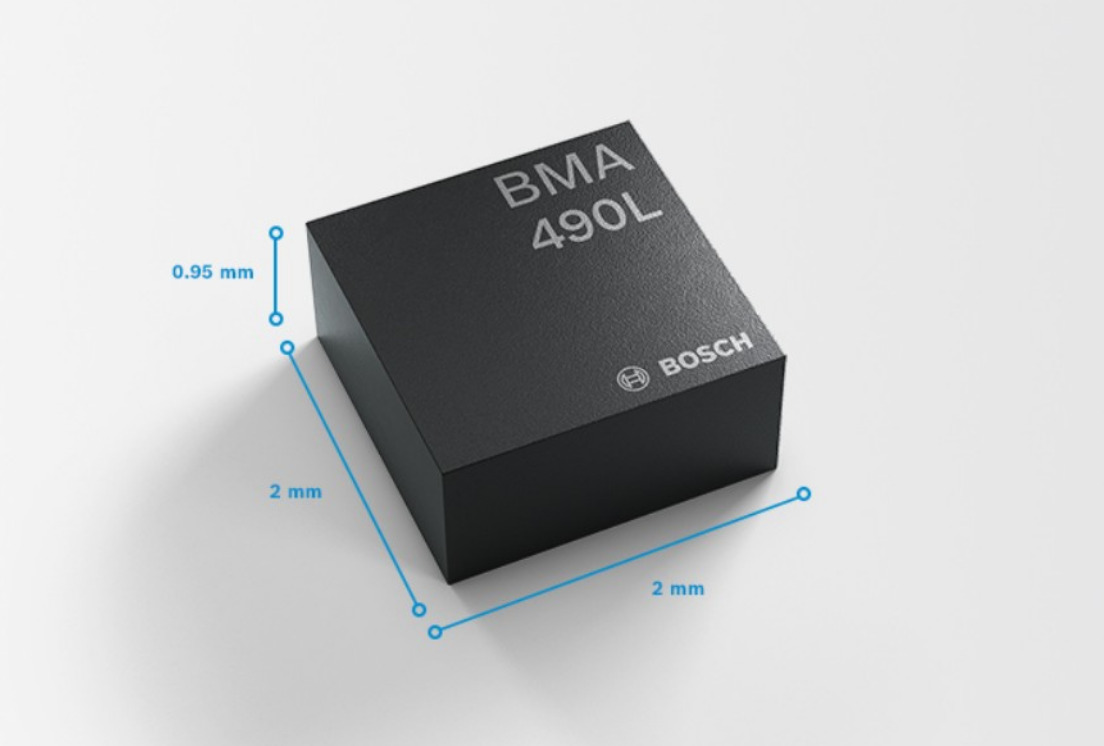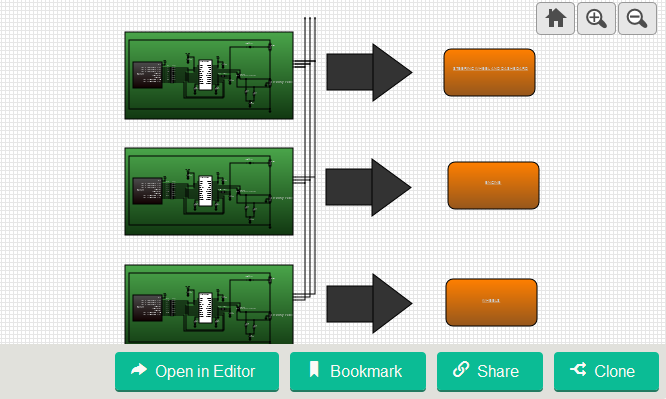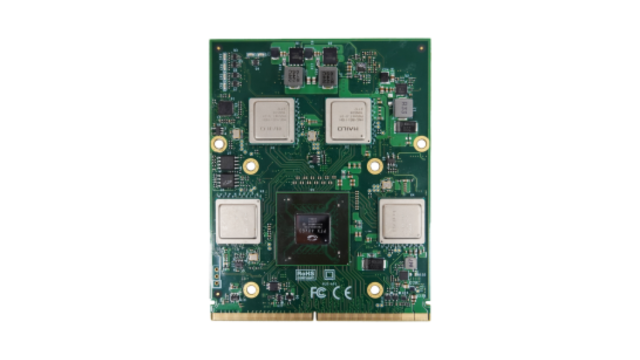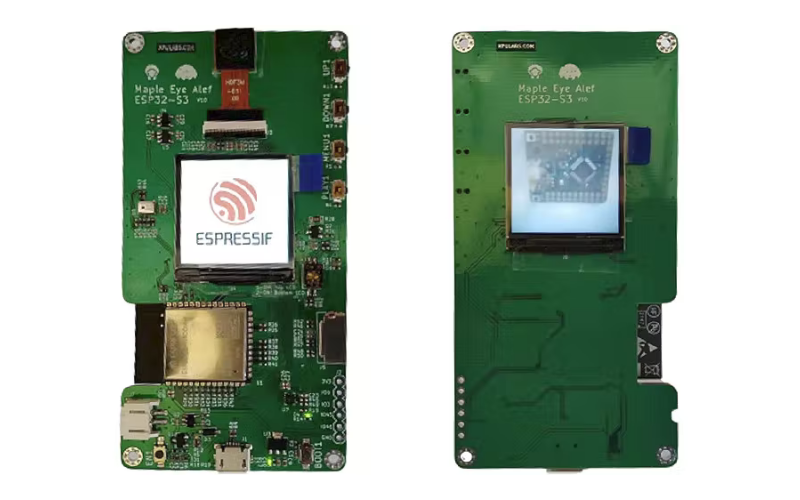
AnalogLamb’s $19.99 Maple Eye AI development board with ESP32-S3 and ESP-WHO AI framework
There have been several recent developments around TinyML and edge AI applications, and to supply the increasing demand from the developer community, many embedded electronic device manufacturers around the world are designing AI development boards. Beijing-based online embedded hardware store AnalogLamb has listed a $19.99 Maple Eye AI development board with two onboard Espressif system-on-chips. At the heart of the hardware are the ESP32-S3 and ESP-WHO AI development framework that is specifically designed for AI applications such as human face detection, object recognition, and gesture recognition.
The Espressif ESP32-S3 is integrated with a dual-core XTensa LX7 microcontroller that can be clocked up to a clock frequency of 240 MHz. Along with this, the microcontroller chip is equipped with 512 KB of internal SRAM and supports various wireless connectivity. ESP32-S3 offers 2.4GHz IEEE802.11b/g/n Wi-Fi and Bluetooth 5 (LE) connectivity for long-range applications. In terms of AI acceleration, the hardware chip supports vector instructions that provide acceleration for neural networks and signal processing workloads.
The other AI framework onboard is ESP-WHO, an image processing development platform that provides examples for Human Face Detection, Human Face Recognition, Cat Face Detection, Gesture Recognition, etc. The ESP-DL deep learning library allows developers to utilize the ESP-WHO framework to implement various applications through peripherals that are available on the Maple Eye AI development board.
On top of a rich set of peripherals, the acceleration for neural network computing and signal processing workloads provided by the SoC makes the modules an ideal choice for a wide variety of application scenarios related to AI and Artificial Intelligence of Things (AIoT), such as wake word detection, speech commands recognition, face detection, and recognition, smart home, smart appliances, smart control panel, smart speaker, etc.
The camera module comes from Omnivision’s OV2640, an image sensor based on the CMOS technology, providing image processing functions such as exposure control, gamma, white balance, color saturation, hue control, and noise-canceling. There are a total of 45 general-purpose input/output pins with functionality that include SPI, I2C, I2S, and UART buses among others. The hardware supports the same software as the ESP-WHO AI framework runs on ESP-IDF, a common framework to develop applications for ESP32-S3 (using C language).
Analysis
The hardware design is not new to the market as Espressif’s ESP32-S3-Eye, a small-sized AI development board, is based on the ESP32-S2 SoC and ESP-WHO AI framework. Maple Eye AI development board has a similar hardware setup to the original Espressif board with a 2-Megapixel camera, two LCD displays, and a microphone that can be utilized for image recognition and signal processing applications. Interestingly, the hardware is on sale at $19.99, which is a discount price from the previous $47.00 price tag.





